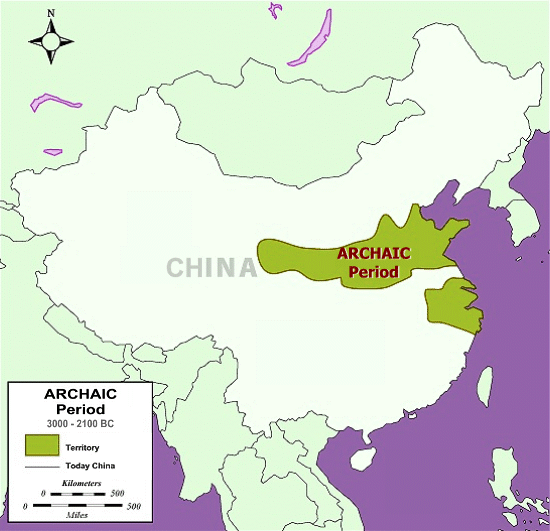3000 - 2100 BC: Archaic Neolithic Period

Image above - Banshan Vase (Gansu-Qinghai) (3000-2100 BC)
The Archaic or Neolithic period of Chinese history spans from 6000 BC to 2100 BC, preceding the Xia Dynasty. This ancient period was ruled by Three August Ones and the Five Emperors, which modern historians believe the heads of different ethnic groups, rich of ancient mythology, who, with wisdom and power, were able to improve human life. Some of them became Taoist deities.
With the movement from a nomadic to a sedentary lifestyle, the population lived in villages, relying on fishing and hunting.
As early as 5000 BC, the Yangshao culture (and later the Longshan culture in 3000 BC) is shown in the Yellow River valley with agriculture that ensures a growth in the population, with an administrative system, the building of houses, crafts, and with some sort of ancestor worship.
The findings of vases and amphoras for domestic use, for storage of grain, and also for the funeral rites celebrating the memory of the ancestor, give visible evidence to these cultures. The first potteries produced in China date back more than 10,000 years ago, with terracotta pots with delicate paintings, portraying their beauty, craftsmanship and practical use.
The Longshan artisans knew the use of the lathe, and produced valuable pottery.
Even more, in this period there is the cultivation of rice, silkworm and silk production.
